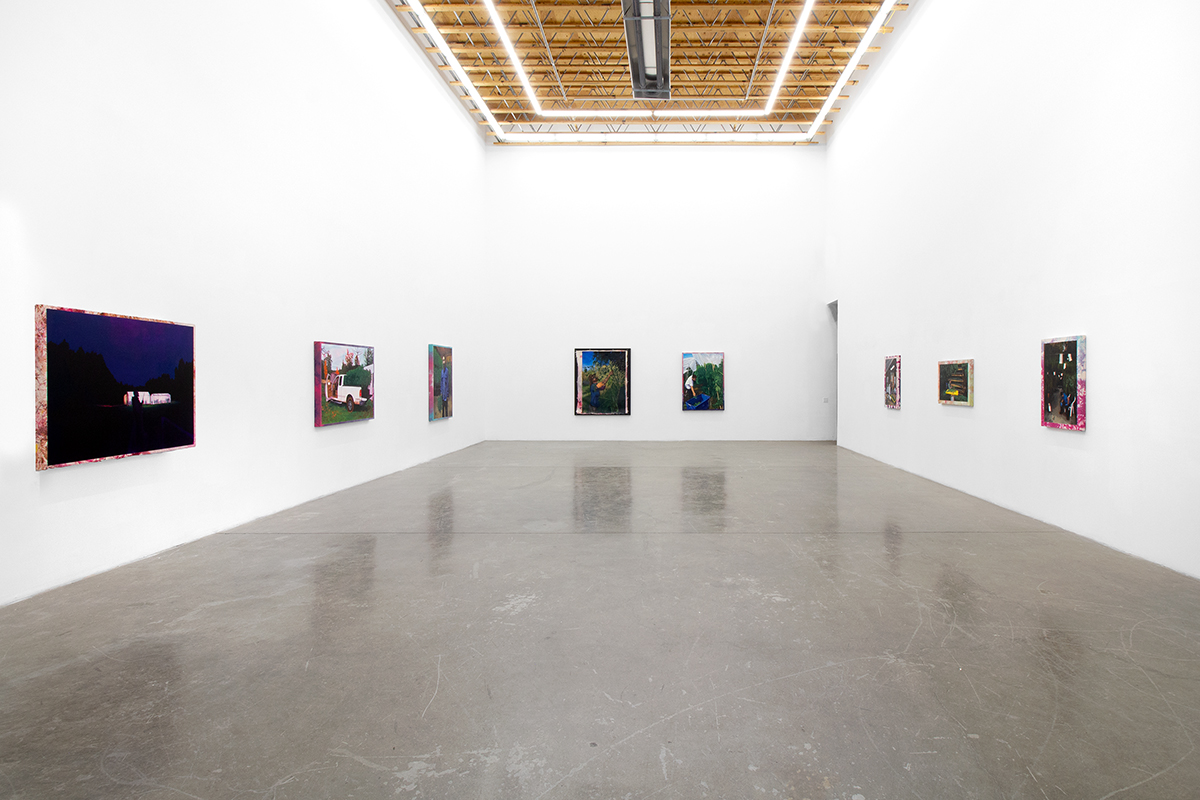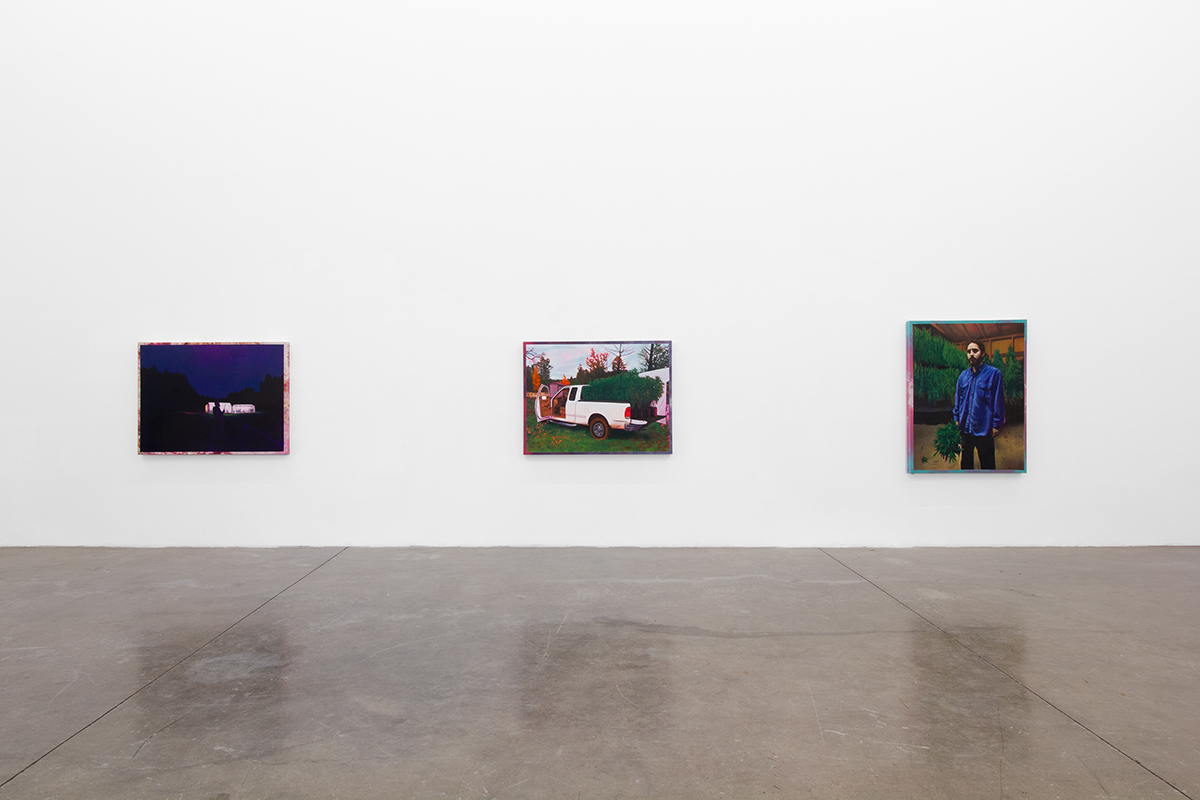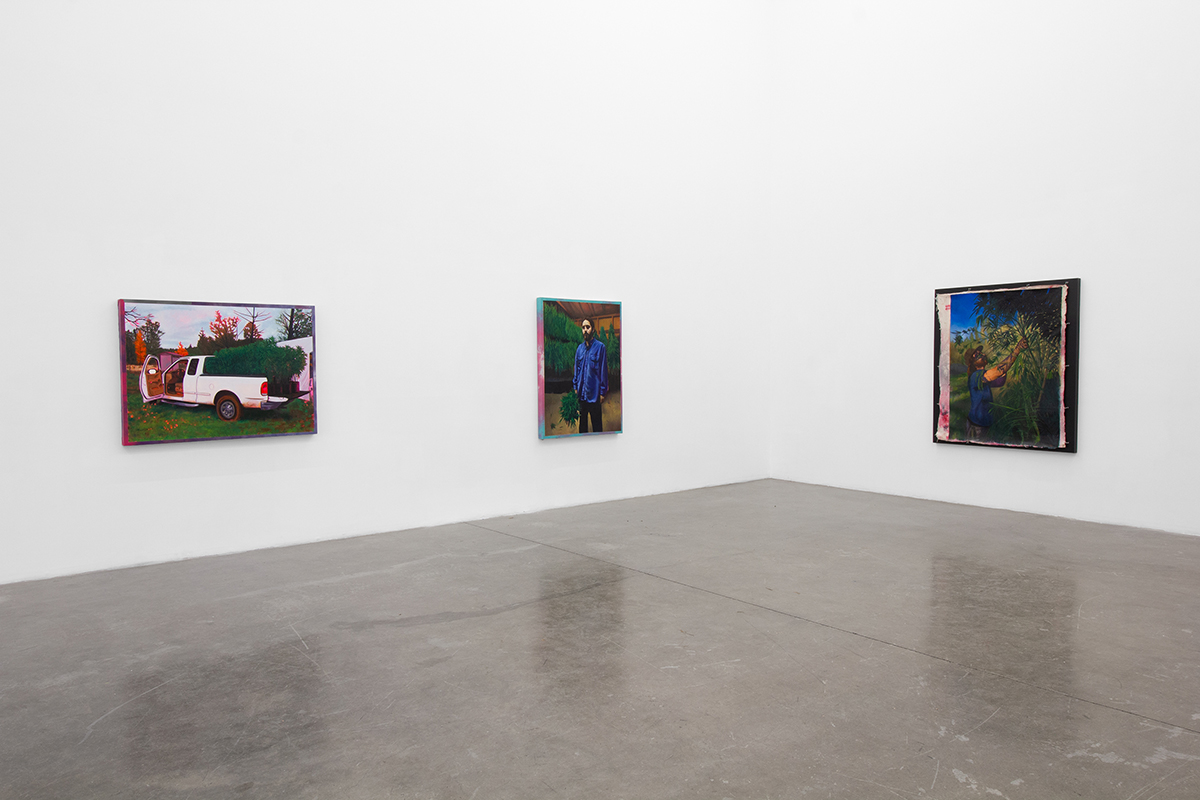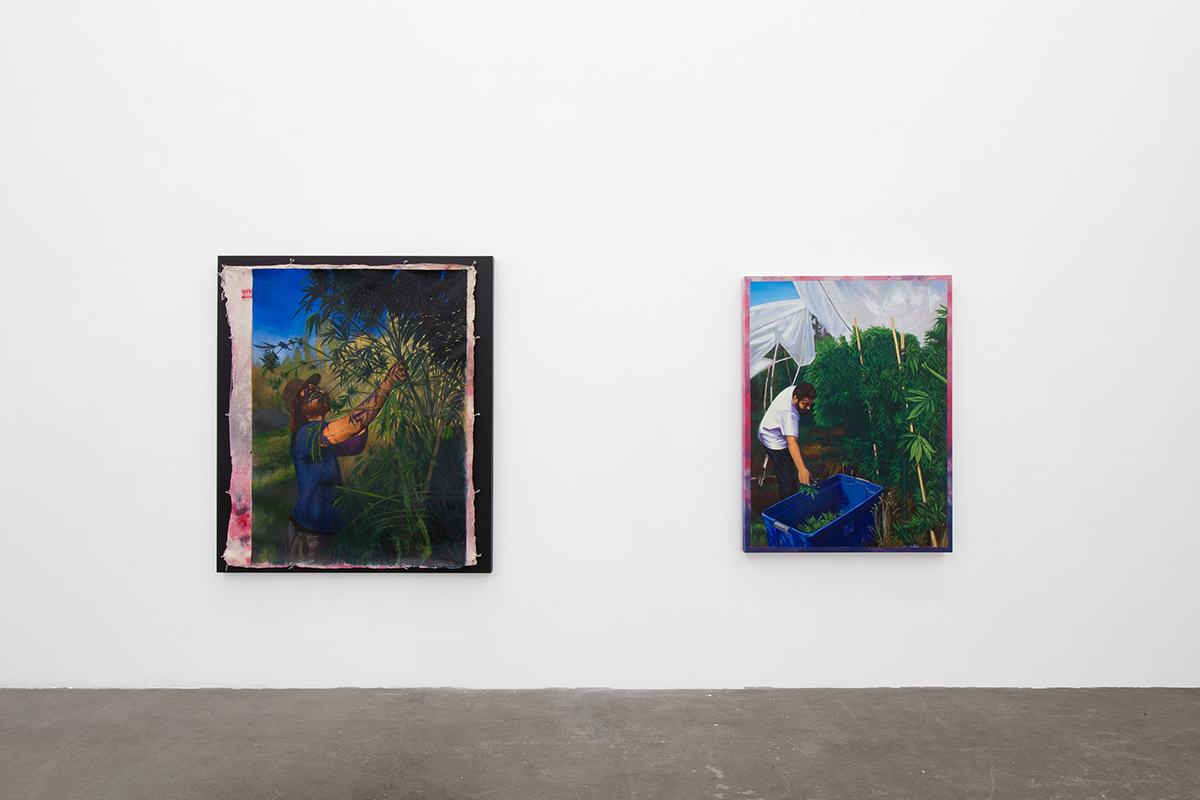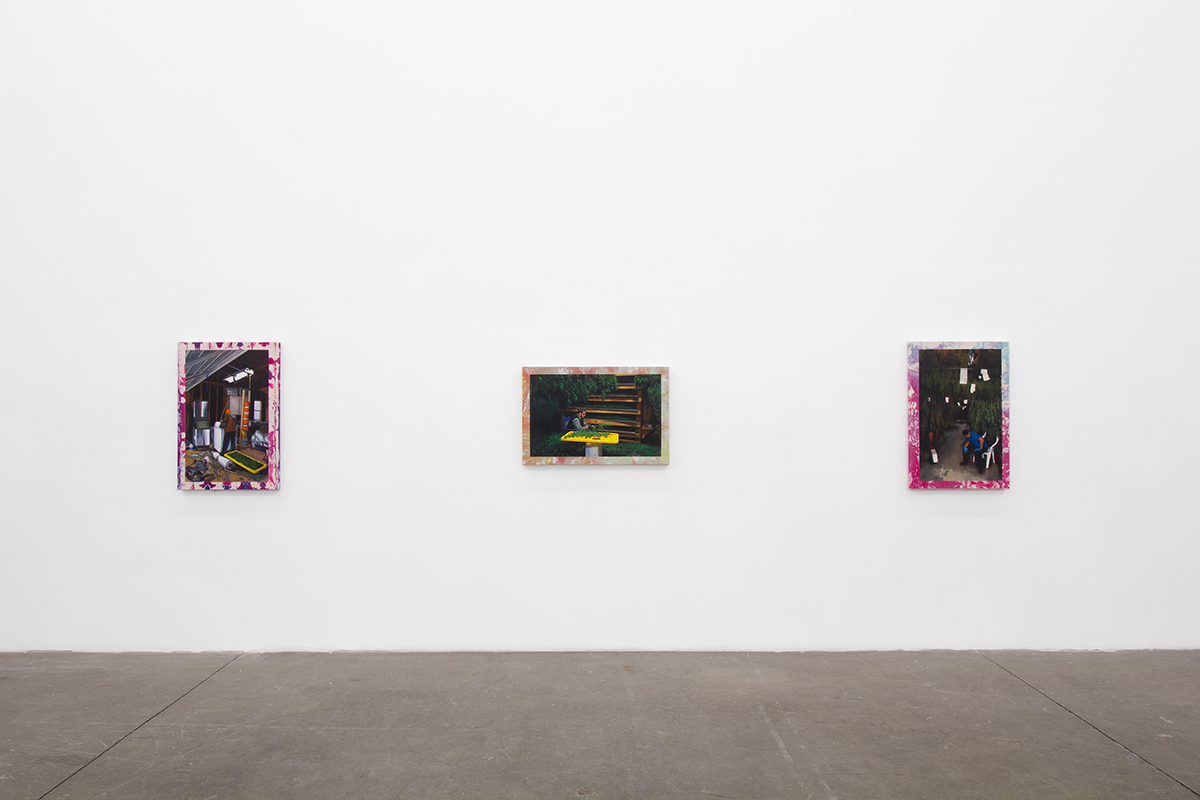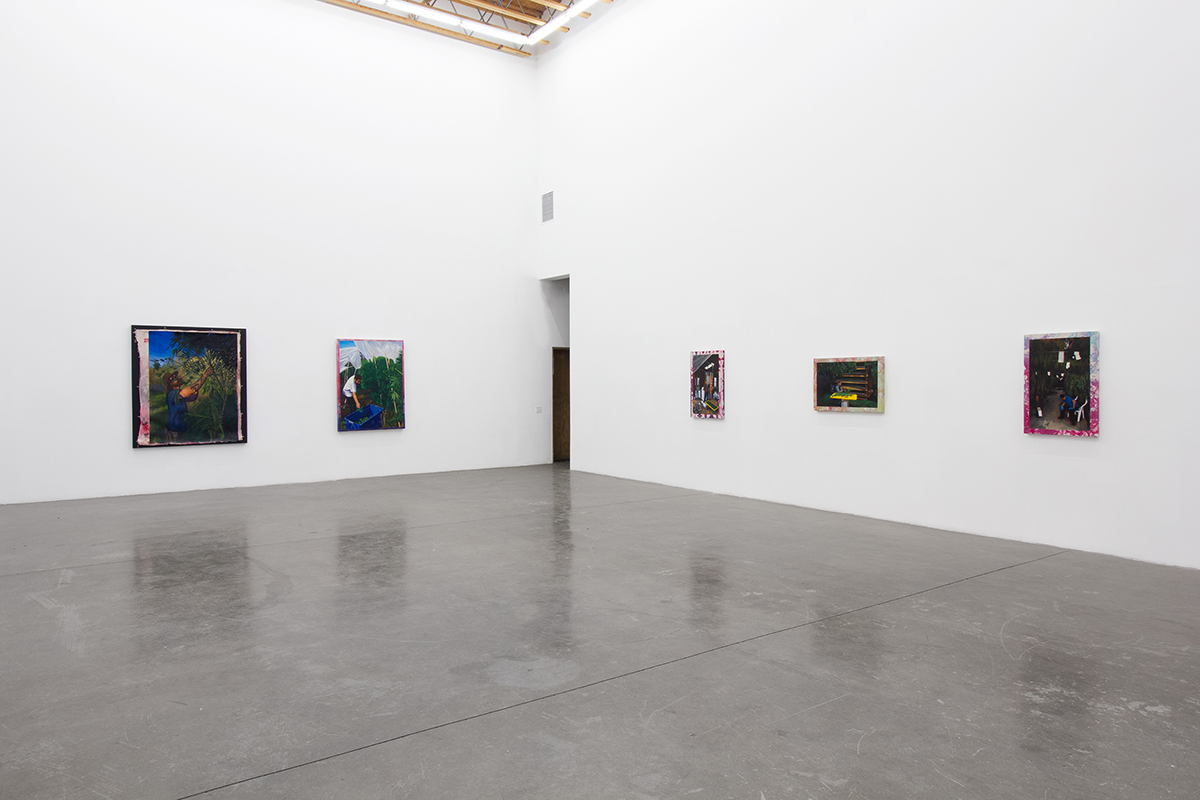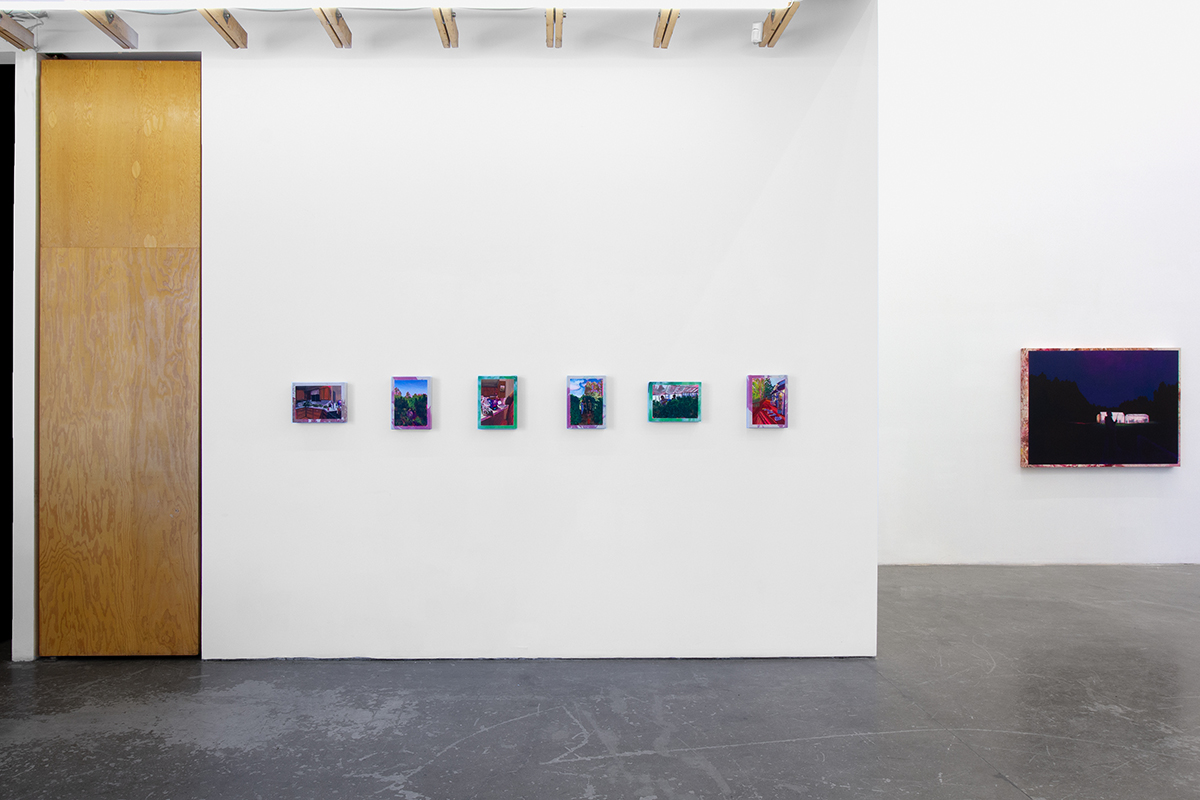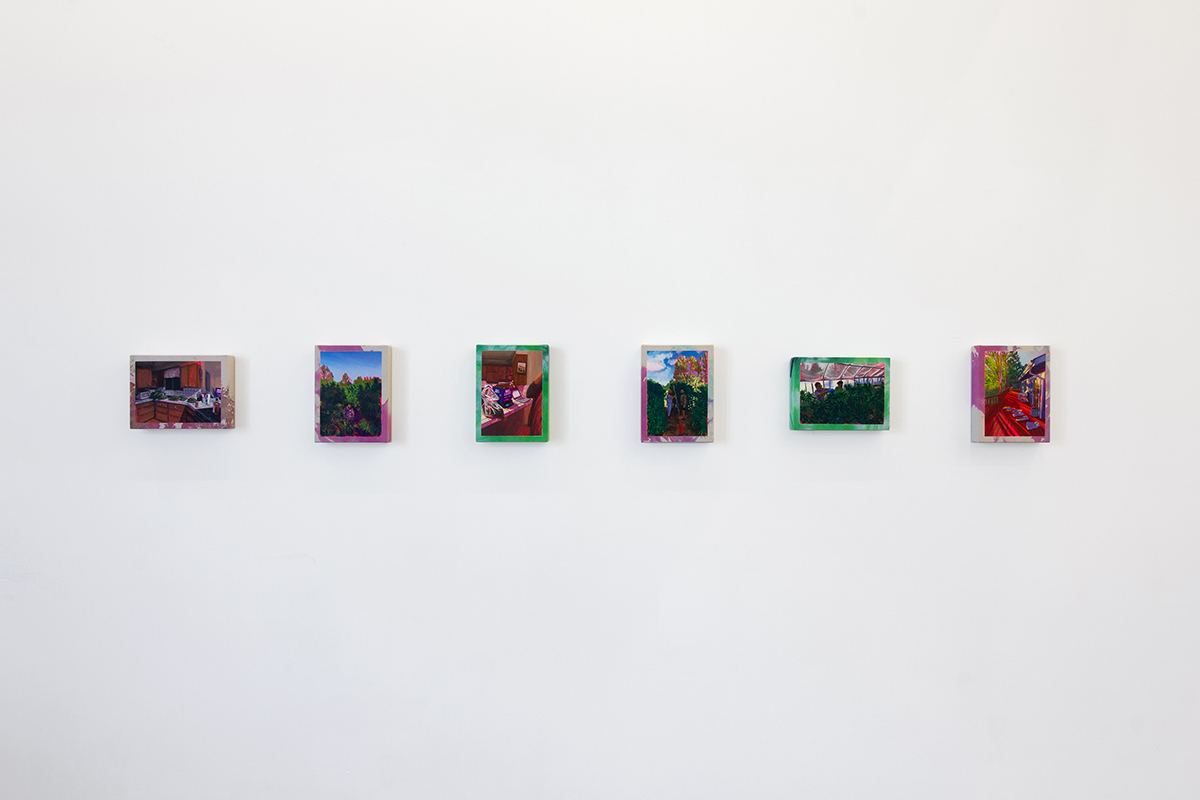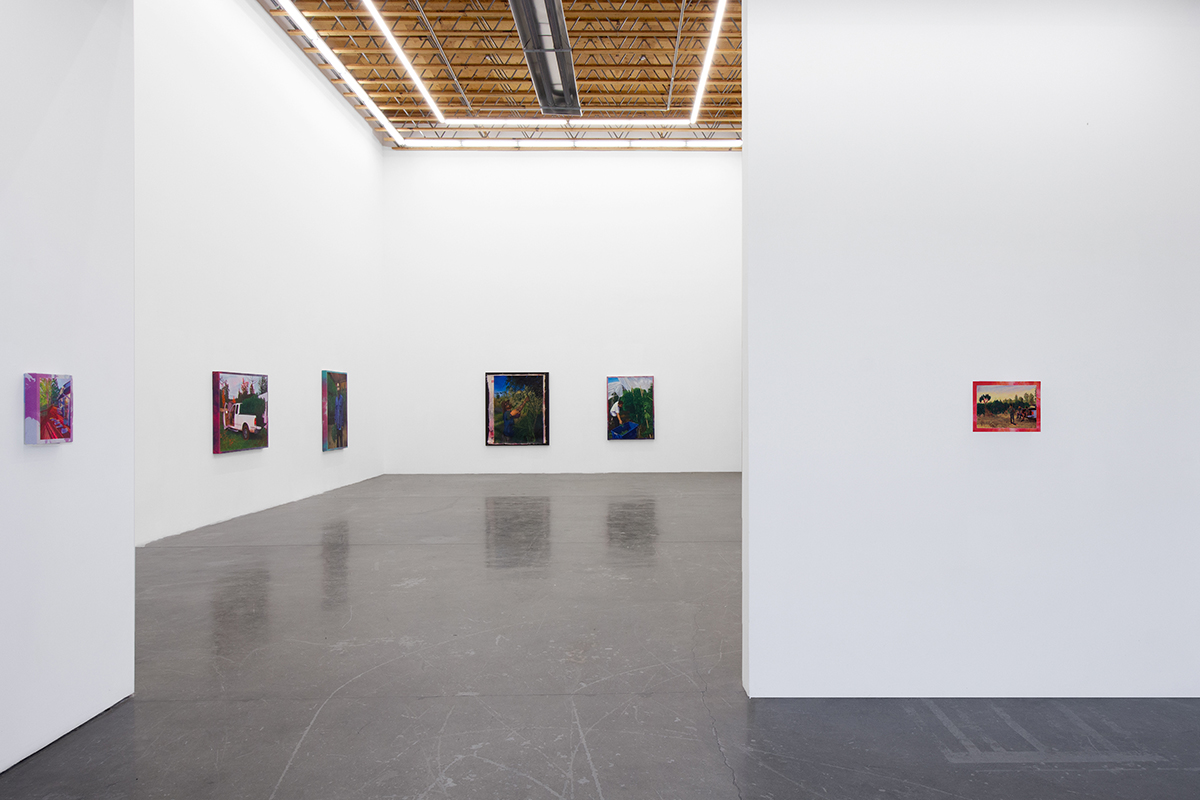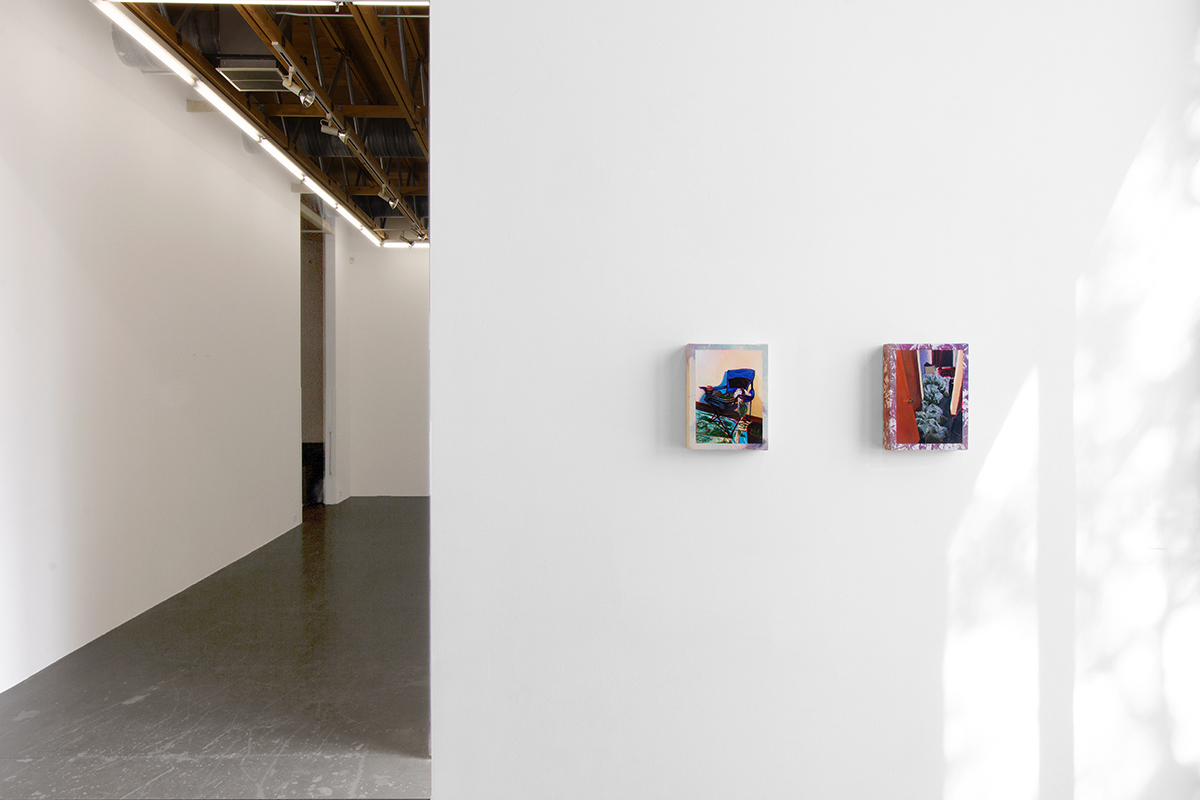HELY OMAR GONZALEZ
OCHI is pleased to present The Gleaners, a solo exhibition of new works by Hely Omar Gonzalez. This will be the Artist’s first exhibition with the Gallery. The Gleaners will be on view at OCHI, Sun Valley located at 119 Lewis Street in Ketchum, Idaho from October 1 through November 12, 2022.
The Gleaners is a suite of paintings that depict the quotidian activities of a clandestine community living and working on a marijuana processing farm in Northern California. Gonzalez’ series is inspired by and named for Jean-François Millet’s The Gleaners (1857), a painting that features three women collecting leftover wheat stalks on a farm in rural France. When first exhibited, the painting drew intense criticism from an upper-class audience still recovering from the fallout of the French Revolution. Millet’s The Gleaners is a timeless representation of the human labor behind capitalism, though gleaning can be traced to Biblical passages that reference ungathered crops and unharvested edges of fields to benefit of those less fortunate. The politics and poetics of gleaning can be evidenced in contemporary environmental activism and prompts fertile discourse on topics including climate change and trickle-down economics.
In 2016, Gonzalez garnered the trust of one such farm and opted to live and work alongside an international cohort of seasonal laborers, drawing and painting his colleagues and their environment during his “non-working” hours. Together they grew, picked, trimmed, dried, processed, and packaged marijuana in the shadows of Mt. Shasta. Gonzalez’ documentation of these processes is both revelatory and mysterious, offering insight into the DIY nature of the operation. For example, in the painting Making Hash in the Garage (2022), a figure monitors an open washing machine adjacent to a tower made of two by fours, sawed off buckets, garbage bags, and rubber tubing. Scattered throughout the workspace is a bottle of bleach, an ice machine, bamboo poles, a tray of green leaves, and a chop saw. Gonzalez sets the scene, though the process of hash production remains hazy. Like the great genre painters before him, Gonzalez renders the mundane with exquisite care. An empty Bud Light box sits atop a kitchen countertop scale waiting to quantify a crop of bud. Fingers assess, bundle, and pick lush leaves. Camping chairs, plastic bins, and other utilitarian objects are ubiquitous.
Gonzalez’ paintings also identify ominous undertones. Collective success in such an operation is unusually precarious—frozen pipes, sudden storms, fires, pests, thieves, and all kinds of natural and unnatural occurrences can end a harvest and leave workers with no income. The harsh realities of the farm are perhaps best reflected in the painting Nights Watch (2022). A man holding a rifle is silhouetted against the grow light glow of makeshift plastic sheeted greenhouses, surrounded by a vast black and purple nightscape. Nights Watch evokes the sublime in all its romantic and existential glory, while reminding the audience of what is at stake—the farm is not a utopic commune and its inhabitants take turns guarding the product at all hours of the day and night.
Gonzalez begins each work by Shibori dying linen in a vivid assortment of colors. Stretching the dried linen and taping off a central rectangle, Gonzalez primes a window and lays down a bright neon underpainting before beginning to render figures, objects, or environments. Slowly building layers of luminosity in paint, Gonzalez captures a variety of natural and artificial diegetic lighting conditions found on the farm, his luscious chiaroscuros giving shape to narrative. The completed oil painting appears to hover picture-in-picture above tie-dye abstractions, like a hallucination of the history of a joint floating in the middle of a psychedelic tapestry. In Japanese, Shibori means “to wring, squeeze, and press,” and the visual—sometimes photographic—impressions of this technique recall the physical labor of each fold, twist, and tie, while drawing parallels to the labor-intensive tasks of weed cultivation.
The Gleaners is a love letter to a California in which rich immigrant experiences and hippy counterculture can peacefully coexist. By expanding on the vernacular of work, Gonzalez considers the similarities between leisure and labor as he embraces painting’s ability to tell the multivalent stories of the underrepresented.
Hely Omar Gonzalez (b. 1984, San Jose, CA) earned his BFA from Laguna College of Art & Design. Gonzalez’ work draws from his personal experiences growing up first generation in the culturally rich and diverse Central Valley of California. Borrowing from documentary strategies, Gonzalez uses the framework of narrative fiction as he reconsiders representations of labor, race, and leisure. Gonzalez’ work has been exhibited at venues including the Santa Monica Museum of Art (now known as the Institute for Contemporary Art Los Angeles), Charlie James Gallery, Praz-Delavallade Projects, and Tlaloc Studios in Los Angeles, CA; Muzeo Cultural Center in Anaheim, CA; and the Long Beach Museum of Art, Artistic Edge Gallery, and The New Americans Gallery in Long Beach, CA. His work has been featured in publications including LA Weekly, HYPERALLERGIC, and The Long Beach Post. Gonzalez currently lives and works in Long Beach, CA.
